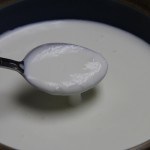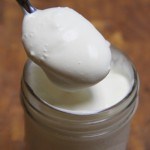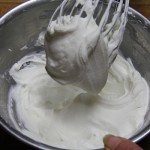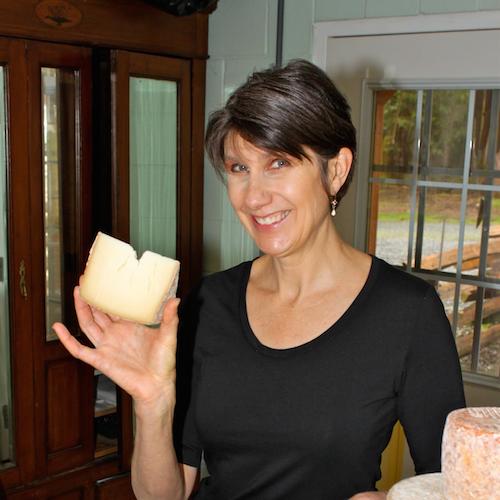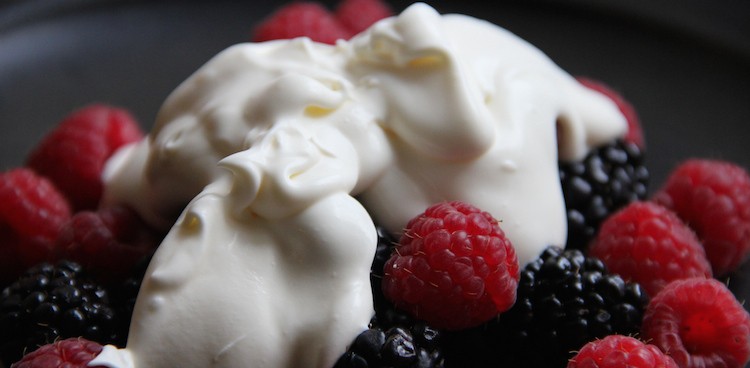
Think of crème fraîche as the perfect love child of conservative, stodgy sour cream and plain ol’ whipped cream. It has the tanginess of one with the lighter creaminess of the other. And you can make it at home easily!
While the literal French translation means “fresh cream,” crème fraîche is actually a soured or cultured cream—originally made with fresh, raw cream naturally ripened to a thick, tangy, spoonable loveliness. Devonshire clotted cream, American sour cream, Italian mascarpone, and even cultured butter are all relatives of crème fraîche (though the French might dispute this).
Homemade crème fraîche is not only a bargain but also a versatile addition to any kitchen. It can serve as a refreshing alternative to sour cream in both sweet and savory recipes. Whisked to stunning peaks and sweetened, it can serve as a more flavorful stand-in for whipped cream. And when made from the thickest, best-quality cream, crème fraîche can masterfully take the place of butter as a spread. It is very much a product of the cream you use— a superior cream skimmed from the fresh milk of a Jersey cow will yield crème fraîche that’s amazingly different from that made with a standardized heavy whipping cream purchased from the grocery store. So be prepared to adjust your expectations accordingly, while at the same time enjoying the cultured fruits of your labor.
Makes about 8 ounces
INGREDIENTS
- 1 pint (2 cups) heavy cream *
- Culture—choose one of the following:
- 3 tablespoons buttermilk with active cultures (it should be labeled as such)
- 3 tablespoons yogurt with active cultures (slightly different directions in step 4)
- 3 tablespoons sour cream with active cultures (hard to find)
- 1 packet direct-set crème fraîche starter**
- ¼ teaspoon flora danica starter culture**
EQUIPMENT
- Pint canning jar with lid
Step 1
Sanitize the pint jar and lid by submerging them in boiling water. (Jar must be designed for canning or it might crack when the boiling water fills it.)
Step 2
Warm the cream in a stainless steel saucepan over low heat, stirring constantly, until it reaches 86°F (30°C). Remove the warmed cream from the heat, add in your culture of choice, and stir until evenly mixed.
Step 3
Pour the mixture into the jar, seal, and let set at about 72°F (22°C) for 12 hours. (If using yogurt as a culture, incubate at a warmer temperature of 85 to 95°F [29–35°C].) To help maintain the temperature, you can set the jar inside a larger jar filled with warm water and place in an insulated cooler.
Step 4
After 12 hours, check the consistency and flavor. When ready, it will have a gravylike consistency and a tangy taste. The pH (if you have a meter) will be about 4.5.
Step 5
If you are satisfied with the flavor, place the jar in the refrigerator for 24 hours. During this time it will thicken to a sour cream or thick yogurt texture.
Step 6
Crème Fraîche is now ready to use! If you desire a bit fluffier consistency, simply pour into a bowl and whisk to thick peaks. You can sweeten or flavor the crème fraîche as well. Store in your refrigerator. It will keep (even after being whisked) for about three weeks, provided you made it with fresh cream.
* Choose the purest, freshest possible pasteurized heavy cream. Most commercially available cream has added thickeners, stabilizers, and sweeteners. If you only have access to those with a few additives (that’s what I made mine from), you can still make great crème fraîche. Many heavy creams are also ultrapasteurized, but don’t try to use these; they will not thicken properly.
** Purchase at home cheese supply company such as New England Cheesemaking Supply Company or Leeners


